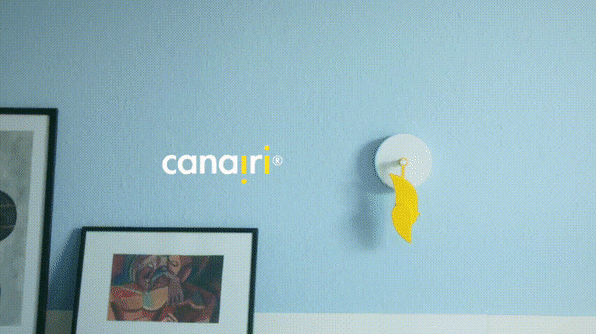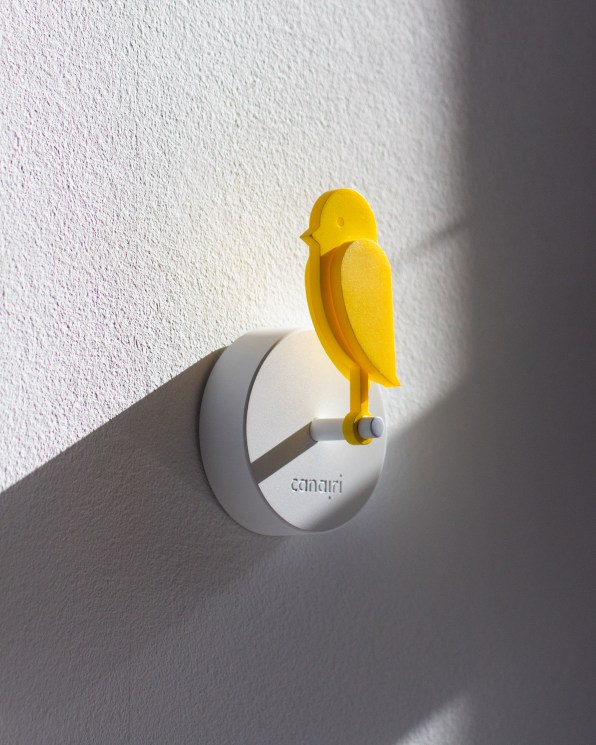Back in the day, miners would bring a canary into the coal mine to detect toxic gases in the air. When the bird keeled over, it was time to get out. Now, a new air quality monitor works the same way, but for your home: when the air quality drops, a yellow canary takes a nosedive — until you open the window to revive it.
Americans spend about 90% of their time indoors, where the air can be 5 to 10 times more polluted than the worst outdoor air. Bad indoor air, including high levels of CO2, has been linked with fatigue, headaches, and even respiratory diseases, all of which could be alleviated by airing out your home. That’s why two designers created Canairi: a minimalist monitor that nudges you to open the window without using blinking lights, warning sounds, or phone notifications. And no, there’s no app; just simple, intuitive design.
[Photo: Courtesy Canairi]When I was little, my grandparents started the day by opening the windows. In the winter, the house would be freezing for about 10 minutes, and I would rant for another 10, but the air was always crisp. Now, after two years of dealing with an airborne virus, indoor air quality has become the holy grail—but I’m still bad at opening the window.
Canairi’s brilliance is that it uses a simple mechanism to trigger a visceral emotional reaction: Nobody wants to watch a dead bird on the wall, even when it’s made of recycled plastic. When CO2 levels stay above 1,000 ppm (parts per million) for longer than 10 minutes, a sensor will trigger the motor, which will spin the canary 180 degrees. Once you open the window, it will take about 10 minutes for the canary to rotate back up. (When the battery dies, the canary sits at 90 degrees until you plug it into a charger.)

The speed at which CO2 accumulates varies based on the size of the room and the number of people in it, but put simply: The more people breathing in oxygen and breathing out CO2 in any given room, the higher the levels will be. When CO2 accumulates, it can make you feel drowsy, lose your focus, and develop headaches. Opening the window can alleviate this, but it can also help eliminate other toxins, making Canairi all the more useful.
At its core, the monitor is a simple reminder to ventilate your home by its ability to convey information using simple cues. “We discovered a lot of products that seem to be made by engineers for engineers,” says Hans Hoite Augustenborg, who cofounded Canairi with Andreas Kofoed Sorensen. “We were looking for cues that weren’t annoying but engaging.”
 [Photo: Courtesy Canairi]Unlike carbon monoxide, which presents immediate danger and requires monitors to have more than visual triggers, Canairi is only necessary for the room you’re in. This allowed the designers to strip away complicated displays and auditory clutter. “We’re so used to getting alerts and notifications from products all the time, but you tend to ignore them or forget them or turn them off again,” says Augustenborg. “When you see something from the corner of your eye, you always notice it.”
[Photo: Courtesy Canairi]Unlike carbon monoxide, which presents immediate danger and requires monitors to have more than visual triggers, Canairi is only necessary for the room you’re in. This allowed the designers to strip away complicated displays and auditory clutter. “We’re so used to getting alerts and notifications from products all the time, but you tend to ignore them or forget them or turn them off again,” says Augustenborg. “When you see something from the corner of your eye, you always notice it.”
At the time of publication, Canairi has raised more than $375,000 on Kickstarter; it will be available in October for $199. In the meantime, remember to open your windows—and keep your imaginary canary alive.
[ad_2]
Originally Appeared Here